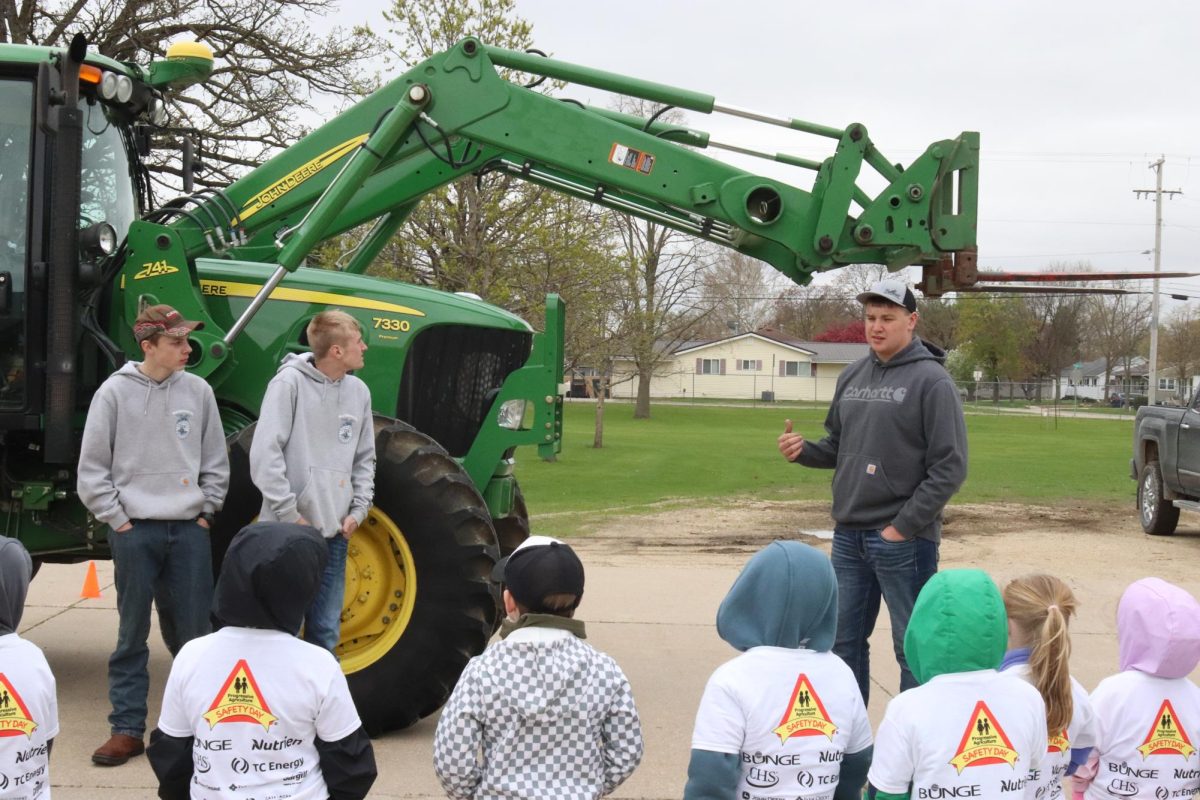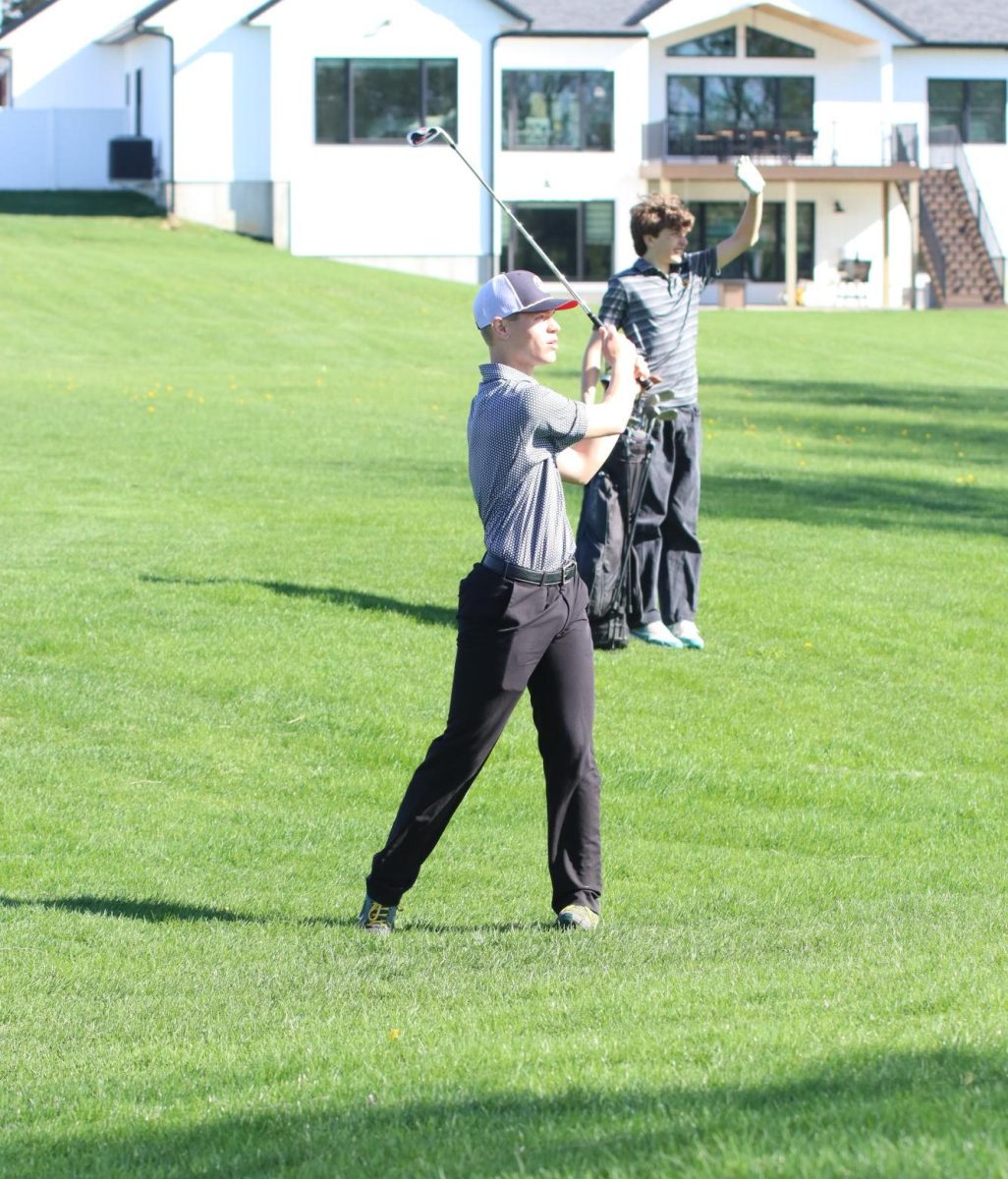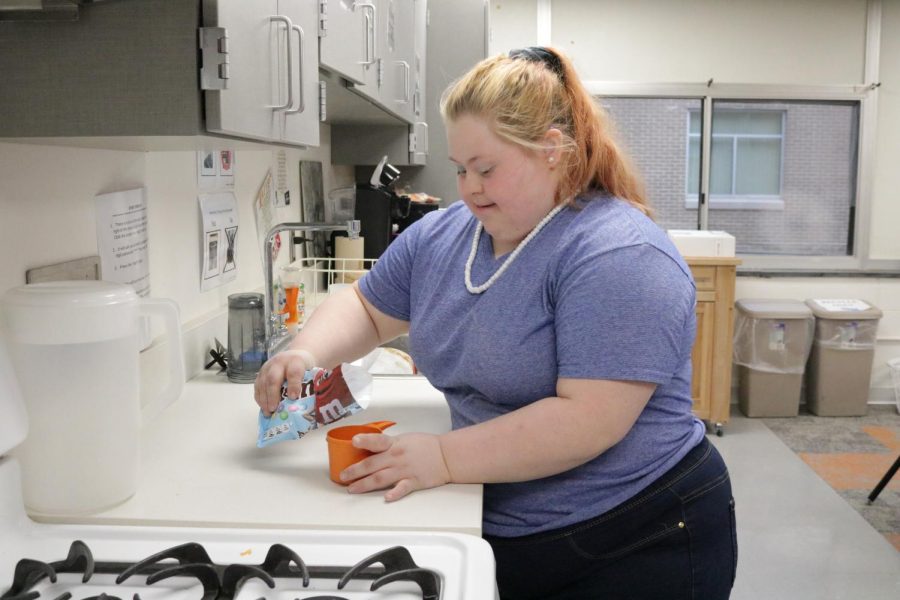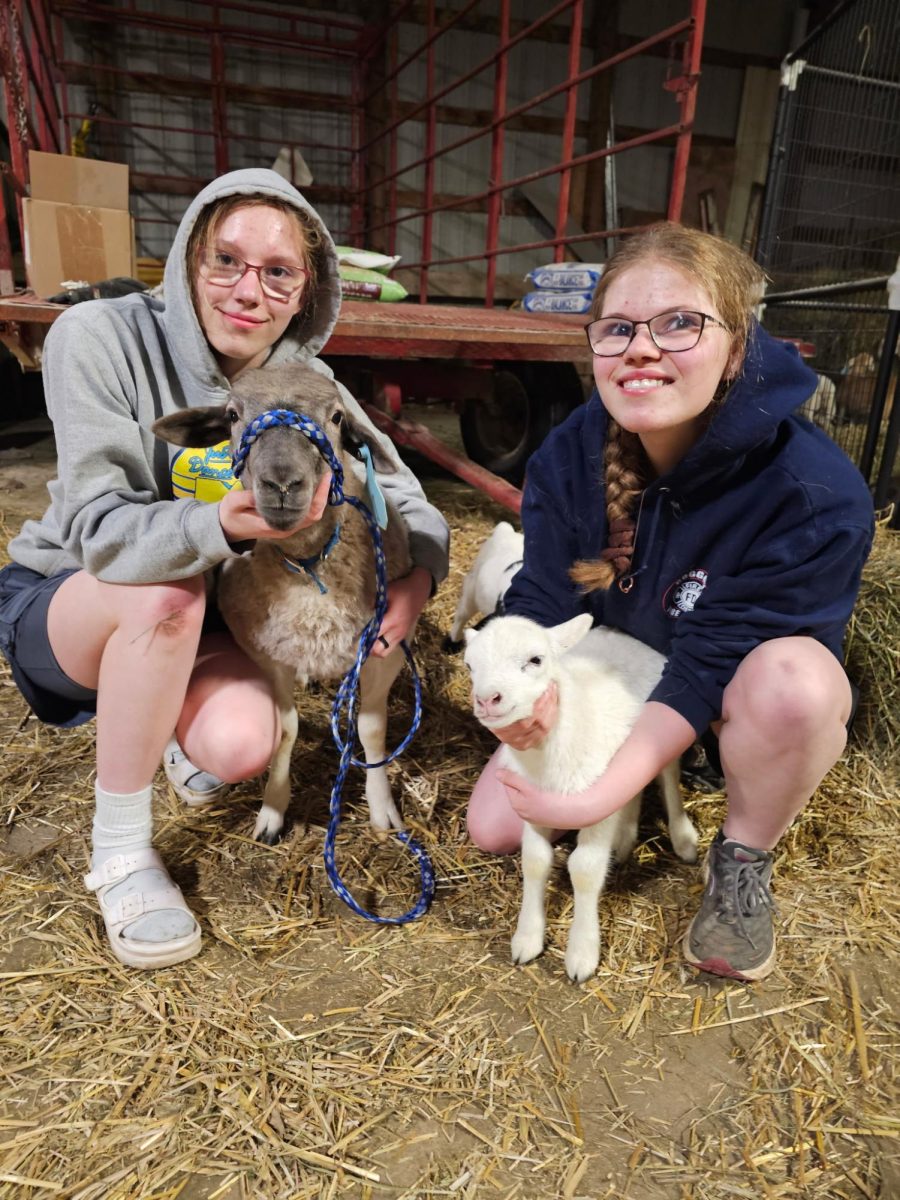Babies, babies, and more babies! In the spring season, newly born animals are welcomed into the Coleman family.
Whether it is calves, chicks, or lambs, these animals can be found at Abigail and Elizabeth’s family farm near Coggon.
In the fall and winter months, these freshmen care for approximately 150 chickens, over 40 sheep, and 16 cows.
During the spring season, the number of these animals increases.
Around 80 lambs and seven calves are born, increasing the chores and responsibilities.
“Animals are outside more, and it’s not cold, so they drink more water,” Abigail said.
This then requires the Coleman twins to carry several five-gallon buckets of water to their shed located over 30 feet away.
Elizabeth says chores take longer in the spring due to the chore of bottle feeding baby sheep.
“We feed them in the morning and at night,” Elizabeth said. “Our dad feeds them in the afternoon.”
These chores make an already busy schedule even more packed. Before the sun rises, Abigail and Elizabeth begin their chores.
“We wake up at 5:35,” Abigail said. “At 6:25, we start making the bottles.”
Next, they feed their lambs. On a good day, this takes 20 minutes.
Alaska and Swiss, their bottle-fed babies, bring joy and challenges in the early mornings.
“Every morning when we go in, they run up and escape their enclosure,” Abigail said.
Bolting straight to the twins, the lambs excitedly beg for their breakfast.
“When they are eager for the bottle, they can be frustrating,” Elizabeth said.
“Sometimes Swiss will headbutt you because she’s hungry,” Abigail said.
Along with headbutts, the lambs also jam fingers.
“Whenever we feed them, they always slam their head into your fingers,” Abigail said.

These baby sheep are also known to crowd the sisters.
“They swarm your feet when you have the bottles, so you can’t walk,” Elizabeth said.
Often, these lambs will escape their pen.
“We just see them roaming around,” Abigail said.
When they see the sisters, “they just come running and bleating,” Abigail said.
Once the lambs finish eating, one twin puts them away, while the other collects eggs and does small chores. They then clean up and travel to school.
After school, the twins take an hour and 14-minute bus ride home.
At 6 p.m., the twins start their afternoon chores. They feed all the chickens, bottle feed the lambs, water the animals, and, now and then, feed the cows and sheep round bales.
Though it’s a lot of work, the sisters say the extra chores are worth it when they see the new babies.
“My favorite part about living on a farm is getting to pet and interact with the animals,” Elizabeth said.
“You get to form bonds with the new animals,” Abigail said. “It’s exciting!”



































